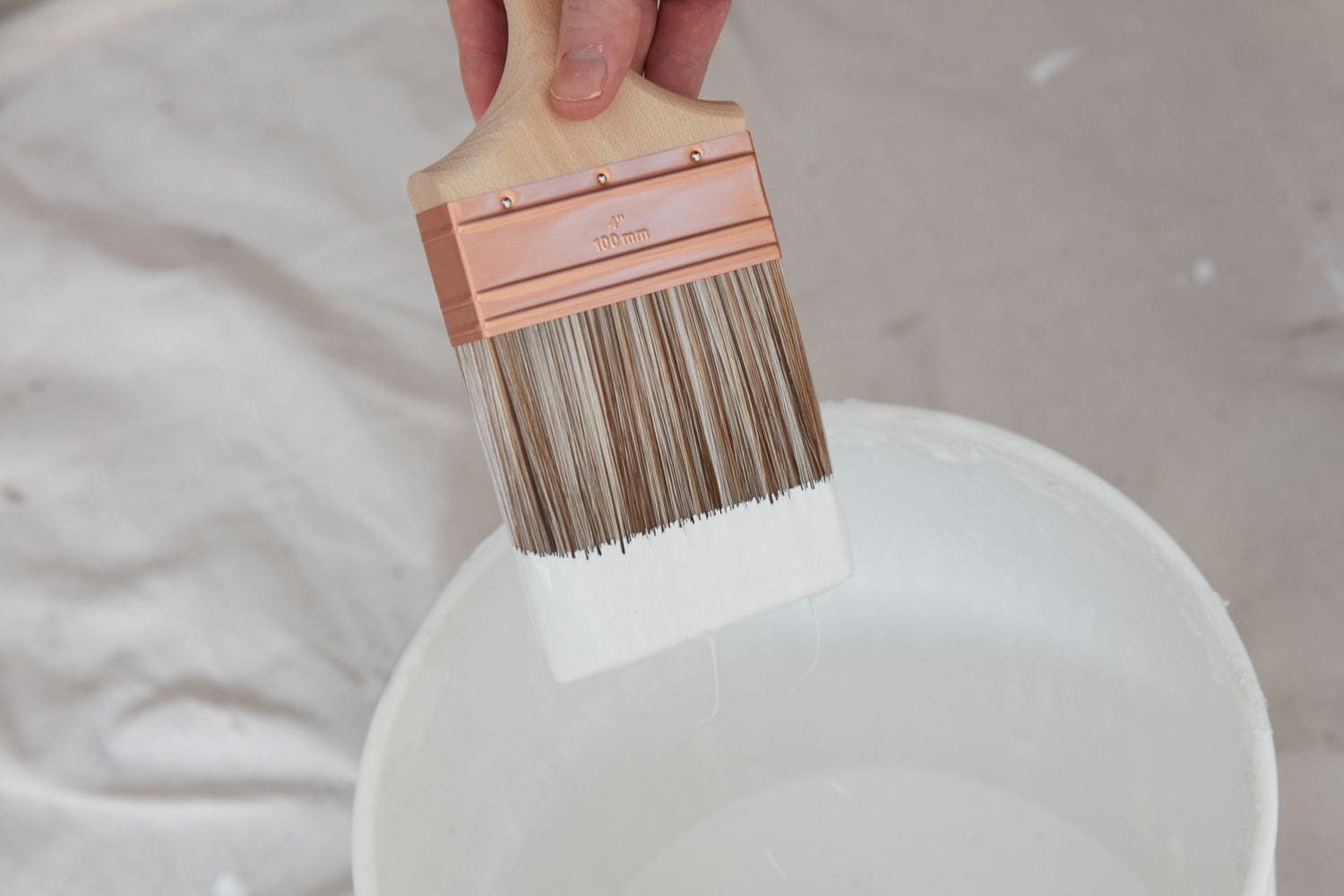
Why Do Painters Wear White? | Prep Smart Painting
Table of Contents
Have you ever wondered why do painters wear white? It’s a common sight to see painters decked out in their pristine white painter outfits, whether they’re climbing ladders with paint cans or smoothing out walls. This tradition of painters wearing white isn’t just about fashion—it’s rooted in practical and historical reasons. From painters clothes to painter uniform, every piece has its purpose. In this blog, we’ll explore the compelling reasons behind this uniform choice and how it helps painters in their day-to-day tasks. Why is it that, despite the risk of stains, white on white painter attire remains the standard? Join us as we uncover the layers of history and functionality behind painters whites.
Historical Background
When we see painters in their distinctive white painter outfits, it’s not just a random choice—it’s a tradition steeped in history. But how did this practice come to be? In this section, we delve into the origins and evolution of why painters wear white. From practical beginnings to symbolic meanings, the reasons behind this uniform choice reveal much about the painting profession’s past. Let’s explore the historical backdrop that has colored this tradition white.
- Origin in the 18th Century: The tradition of painters wearing white dates back to the 18th century. Initially, it was a practical choice—white was the color of lime, which was a common material painters used. Over time, wearing white painter outfits became a standard practice within the profession, signaling cleanliness and simplicity.
- Symbolism of White: The choice of white also carries symbolic weight. White represents purity and a fresh start, aligning with what painters offer—a transformation of spaces. As painters cover old, worn surfaces with fresh paint, their own painter clothes reflect this theme of renewal and cleanliness.
- Economic Factors: Economically, white clothes were cheaper and more accessible. Paint manufacturers often provided painters whites as part of the job, making it easier for workers to maintain a professional look without the burden of frequent replacements.
- Standardization Over Time: By the late 19th century, the image of a painter in white had become iconic. This uniformity helped to create a distinct professional identity and set painters apart in the trades industry. The painter uniform not only signified their trade but also promoted a sense of unity and belonging among workers.
Practical Reasons for Wearing White
Why do painters wear white clothes? Beyond tradition, there are several practical reasons that make white the color of choice for painters. These reasons enhance their work and provide various benefits throughout their daily tasks. Let’s look at why this color dominates the painter’s palette of attire.
- Visibility of Paint Stains: White clothes make it easier to see paint splatters, which might seem counterintuitive. For painters, spotting paint on their painter clothes quickly allows them to clean up or prevent transferring wet paint to other surfaces. This visibility helps maintain a professional appearance even when the work gets messy.
- Coolness and Reflectivity: Working often in sunny, outdoor conditions, painters find that white attire keeps them cooler. White reflects sunlight rather than absorbing it, making it a practical choice for comfort and heat management. Painters clothes and painters shirt in white help reduce the heat absorbed during outdoor projects.
- Cost and Availability: Historically, white fabric was cheaper and more widely available. This made it easier for workers to keep several sets of painters whites or painter outfit ready and clean, thus supporting a tidy work appearance without excessive costs.
- Ease of Bleaching: White clothing can be bleached without worrying about color fading. This is especially beneficial for painters who need to remove stubborn stains. Bleaching keeps painters outfit looking fresh and professional, reinforcing the practicality of wearing white.
These practical aspects of wearing white not only make the job of a painter easier but also help in maintaining a professional standard across the industry.
Uniformity and Professional Appearance
The iconic white painter outfit is more than just traditional attire; it’s a symbol of professionalism and uniformity in the painting industry. Wearing white helps maintain a standardized look that is easily recognizable and respected.
- Standardized Professional Image: Wearing white on white painter attire contributes significantly to a standardized and professional image across the industry. This uniformity ensures that all painters, whether they’re working solo or as part of a team like Prepsmart Painting, present a cohesive and professional front to clients.
- Ease of Recognition: The uniform painter clothes make painters easily identifiable, which is particularly useful in environments where multiple tradespeople are present. It helps in distinguishing their specific role and fosters trust and reliability among clients who associate the white attire with skilled craftsmanship.
- Consistency Across Projects: A unified painter uniform across projects and teams not only streamlines the appearance but also emphasizes the quality and consistency of work, regardless of the job’s location or scale. This consistency helps in building a brand’s reputation, making a painter’s white outfit a crucial part of their professional toolkit.
These points illustrate how the standard painters outfit plays a crucial role in defining the professional identity and operational efficiency of painters in the workplace.
Exploring the Essentials: Types of Painter’s Clothing
A painter’s wardrobe is designed to be practical and durable, allowing for easy movement and functionality while on the job. Here’s a breakdown of the typical painting clothes used by professionals.
| Garment | Features |
|---|---|
| Overalls for Painters |
|
| Painters Pants |
|
| Painters Shirt |
|
| Painters Hat |
|
Exploring the Symbolic Significance of White in Painting
The color white is not just a practical choice in the painting world—it carries deep symbolic and cultural significance. In this section, we explore how this color influences the sense of community and identity among painters, emphasizing its universal recognition within the trade.
- Purity and Fresh Starts: White is universally recognized as a symbol of purity and cleanliness. For painters, wearing white painter clothes, such as painters shirts and painters pants, reinforces the idea of transformation and renewal that they bring to spaces. This symbolic meaning resonates with clients and colleagues alike, emphasizing the painter’s role in creating a clean, fresh start.
- Professional Identity: The painter uniform of white attire helps to foster a strong sense of professional identity. It sets painters apart from other trades and creates a visual symbol of their expertise and commitment to their craft. This uniformity promotes a professional image that is easily recognizable and respected within the community.
- Sense of Unity and Belonging: Wearing the same color, especially in a profession like painting, strengthens the bond among workers. Painters whites signify membership in a shared trade, fostering a sense of belonging and camaraderie that transcends individual workplaces. This unity is crucial in collaborative projects and when representing the trade in public or industry gatherings.
- Visibility and Safety: Beyond symbolism, the practicality of white attire in ensuring visibility enhances effectiveness and safety. In busy work environments, being highly visible can prevent accidents and ensure that painters are easy to spot by colleagues and clients. The use of painting clothes and painting outfit enhances both comfort and safety, making them essential for the job.
Keeping Painter’s Attire Pristine and Professional
Maintaining the traditional white painter attire requires special care to ensure it remains clean and professional. Here’s how painters keep their outfits in top condition, emphasizing routine cleaning, garment replacement, and the handling of durable materials.
- Regular Inspection and Replacement: Painters regularly inspect their attire for signs of wear, such as thinning fabric or fraying seams. Clothes that no longer meet professional standards are replaced, ensuring safety and maintaining a professional appearance.
- Routine Cleaning and Stain Removal: Why do painters wear white? The ability to use strong stain removers like bleach on white fabric allows painters to effectively tackle paint splashes and other stains. This keeps their painters clothes in pristine condition, essential for maintaining a professional look.
- Seasonal and Situational Adaptations: Maintenance varies depending on the season and the specific requirements of each painting job. Lighter materials may be used in the summer for better breathability, while heavier ones are chosen in cooler months for warmth, each requiring specific care to maintain their functionality and appearance.
- Handling Durable Materials: Painters pants are often white and made from durable materials to endure frequent washing and harsh conditions. These robust fabrics support the physical demands of painting jobs and seasonal changes.
Conclusion
As we have explored throughout this post, the reasons Why Do Painters Wear White? are deeply rooted in both historical tradition and practical utility. From its origins as a cost-effective choice to its symbolic meanings of purity and renewal, wearing white has established itself as a fundamental practice in the painting industry. This tradition not only underscores a professional identity but also enhances visibility and safety, contributing to effective work practices like those implemented by PrepSmart Painting.
Professional Painters in Rhode Island follow this tradition, understanding that wearing white is not just about appearance but also about maintaining professional standards and safety. Similarly, Professional Painters in Connecticut recognize the practicality and historical significance of wearing white, which helps them maintain a professional and clean look. This practice is also embraced by Professional Painters in Massachusetts, who appreciate how white uniforms help in quickly spotting paint splatters and ensuring a neat appearance.
Next time you observe a painter in their distinctive white attire, consider it not just a simple color choice but a profound declaration of their professional approach and practical methodology. This perspective deepens our appreciation for Why Do Painters Wear White?, highlighting the significant role this uniform plays in the daily lives of painters.
FAQs
1. Why do painters wear white clothes?
Painters wear white clothes primarily because white shows paint splatters less conspicuously, helping maintain a professional appearance. Additionally, white reflects sunlight, keeping painters cooler while working outdoors.
2. Why does a painter wear white?
A painter wears white for several practical and historical reasons. Historically, white was the color of lime, a common material in paints, making it a cost-effective choice. Practically, white helps reflect sunlight and hides paint splatters effectively, ensuring painters stay cool and look professional.
3. What is the significance of white painter’s uniforms?
White painter’s uniforms symbolize purity and renewal, reflecting the transformative effect painters have on spaces. This color also fosters a sense of professional identity and unity among painters, making them easily recognizable.
4. How often do painters replace their white clothes?
Painters typically replace their white clothes when they become overly stained or worn out. The frequency of replacement depends on the type of painting jobs and the durability of the clothing material used.
5. Are there any safety benefits to painters wearing white clothes?
Yes, wearing white clothes provides safety benefits by enhancing a painter’s visibility in work environments. This visibility is crucial for preventing accidents, especially in busy or cluttered job sites.
6.What makes white a popular color for painting clothes?
White is popular for painting clothes because it symbolizes cleanliness and renewal—qualities central to a painter’s job. Economically, white fabric was historically cheaper and more readily available, making it a practical choice for painters’ uniforms.






